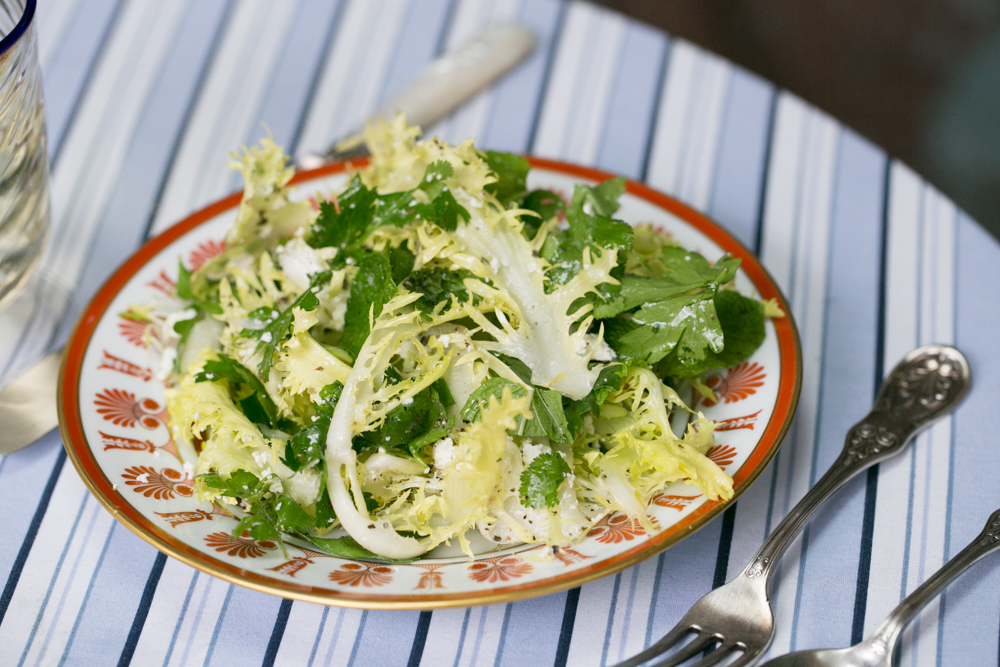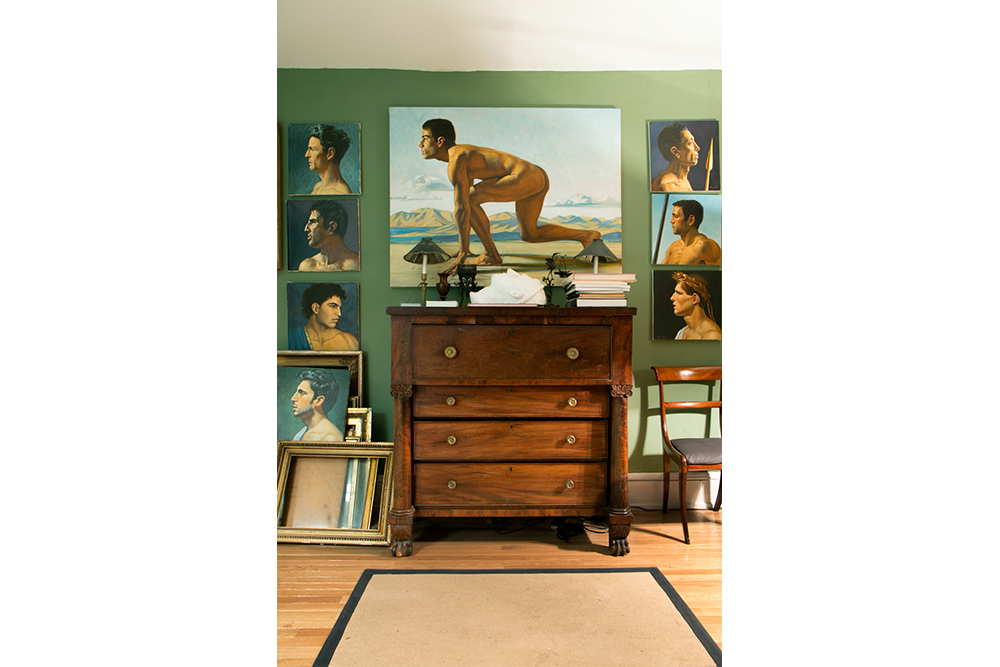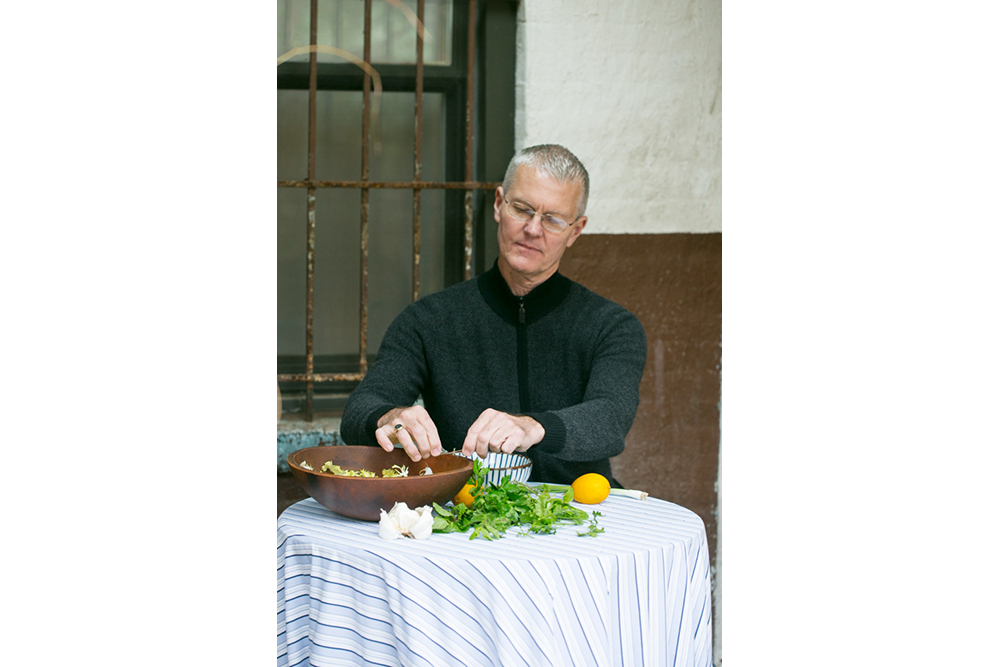Frisée, Mixed Herbs, Ricotta Salata with Lemon Basil Vinaigrette
John Woodrow Kelley’s Salted Herb Salad
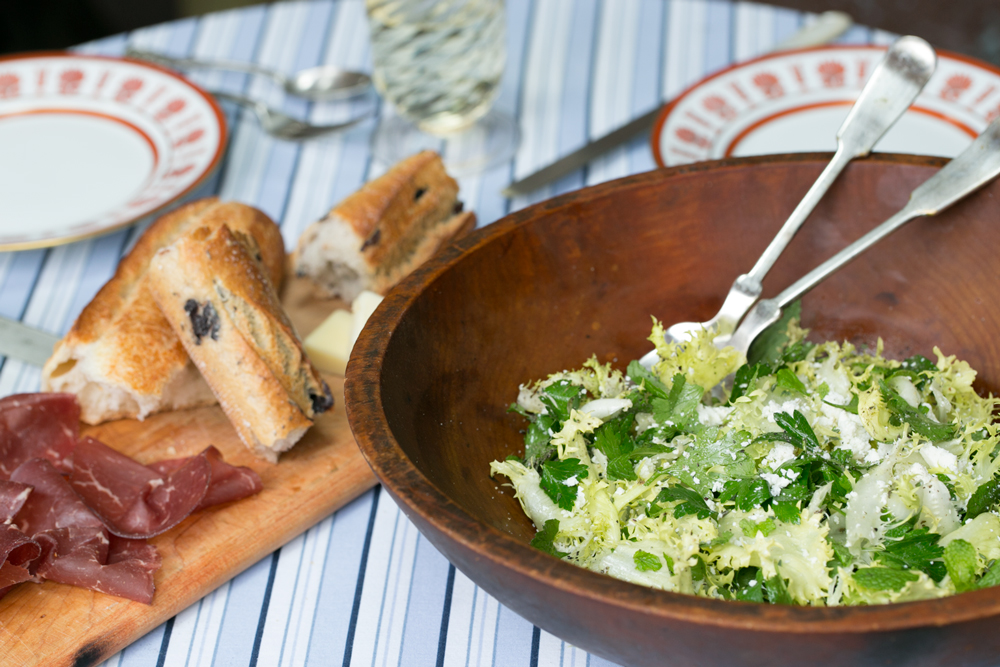
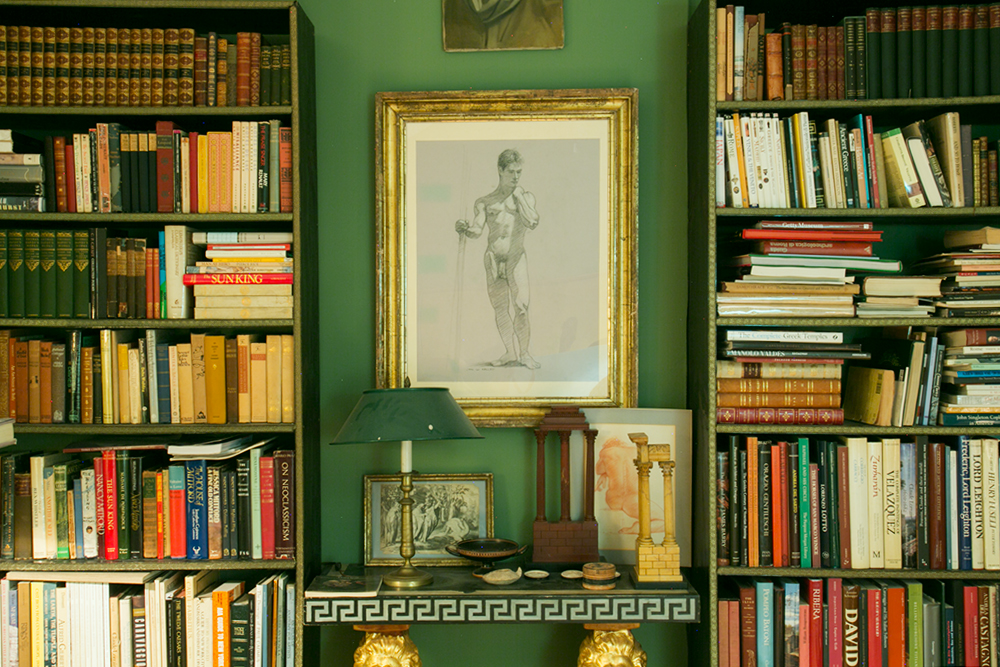
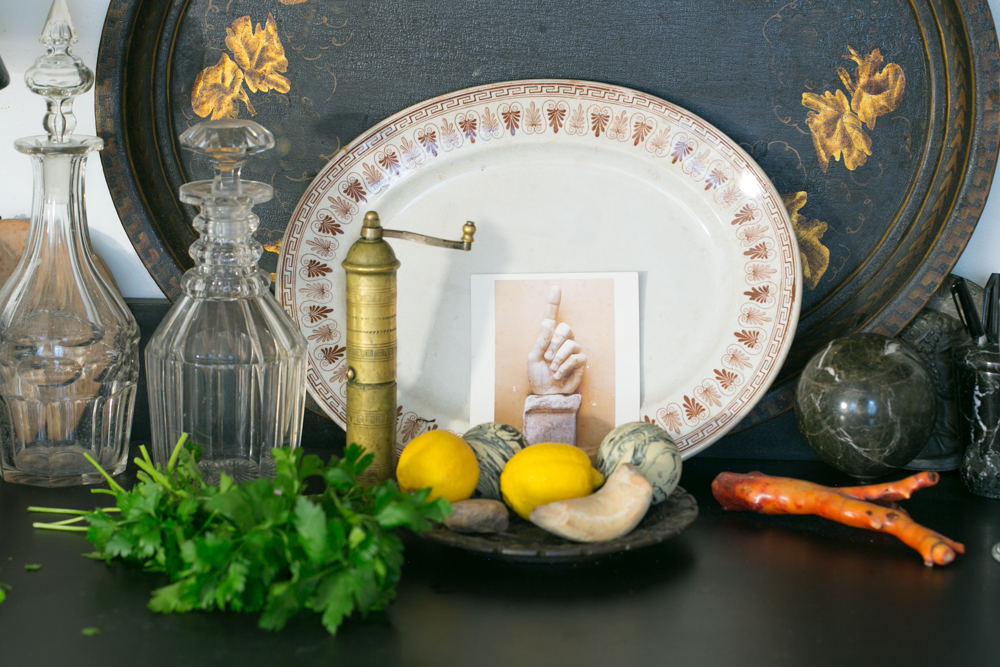
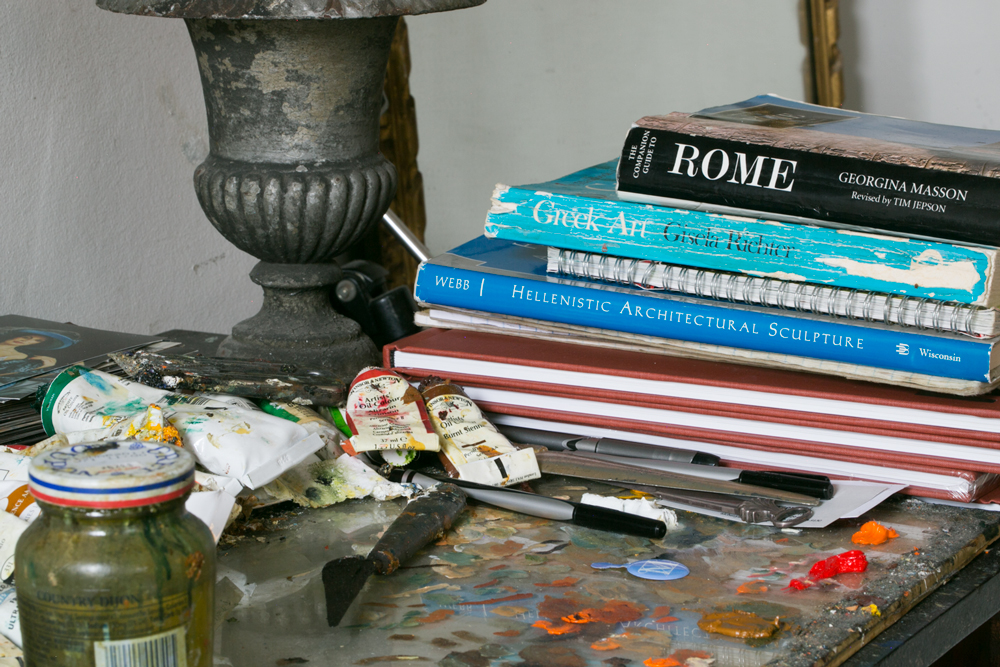
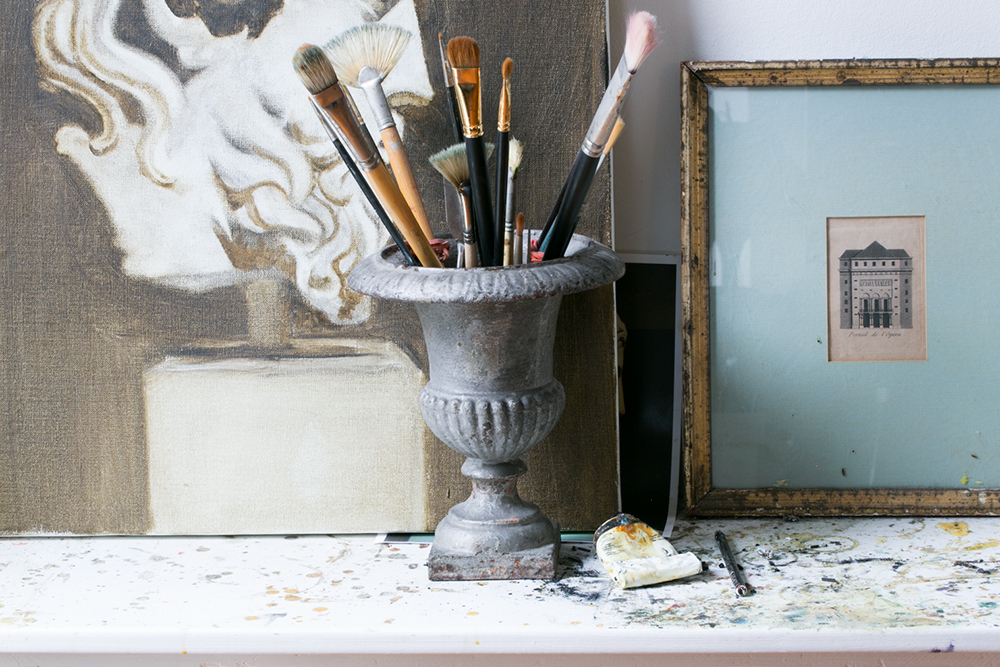
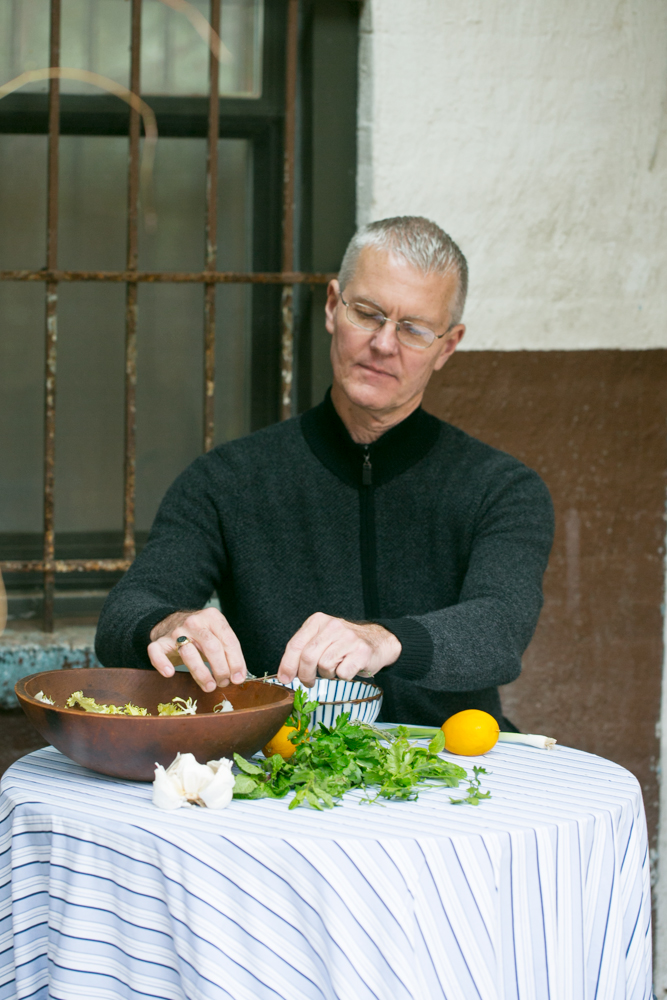

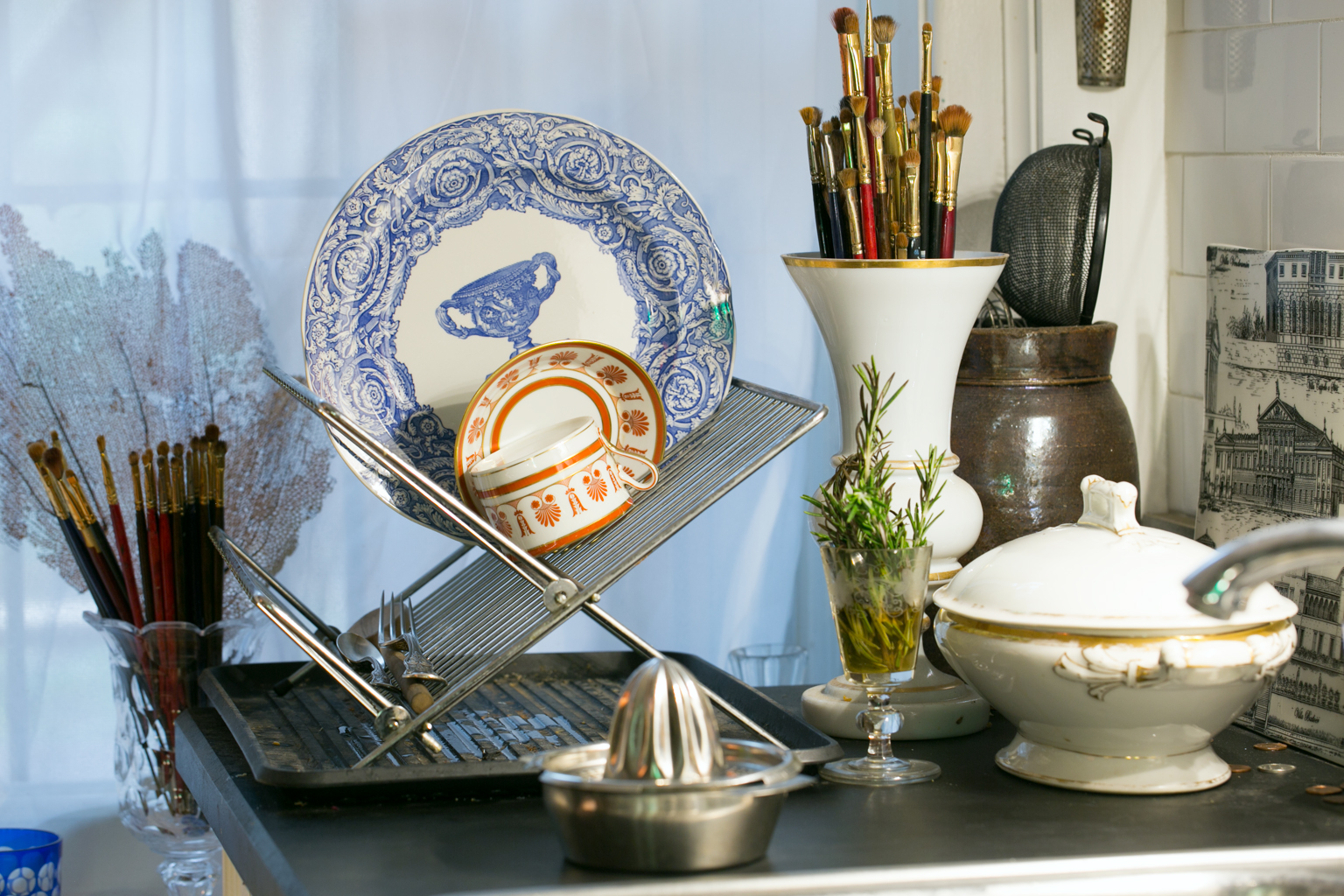
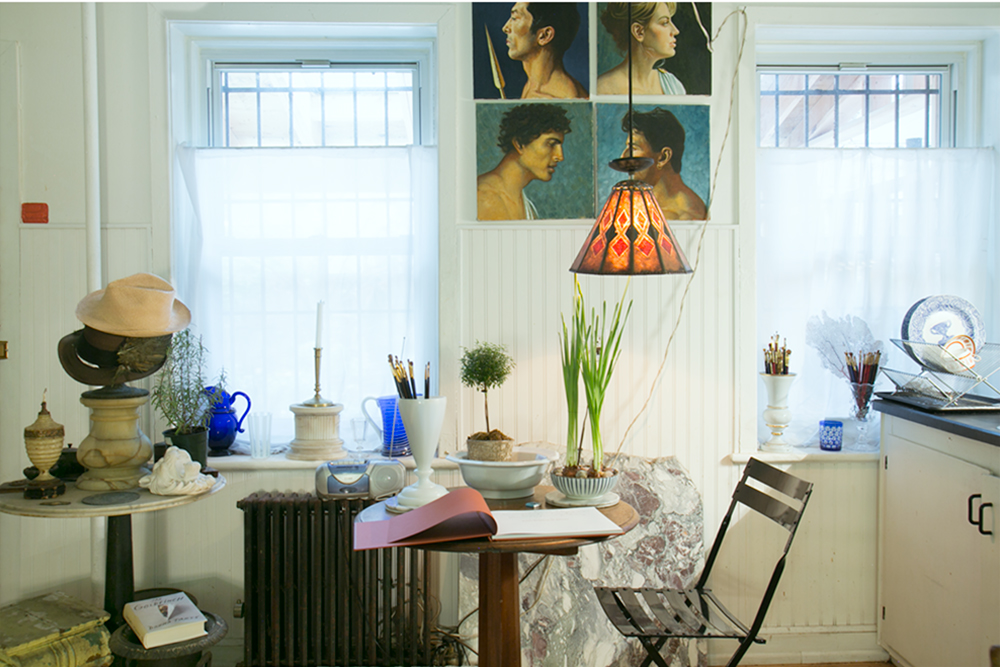
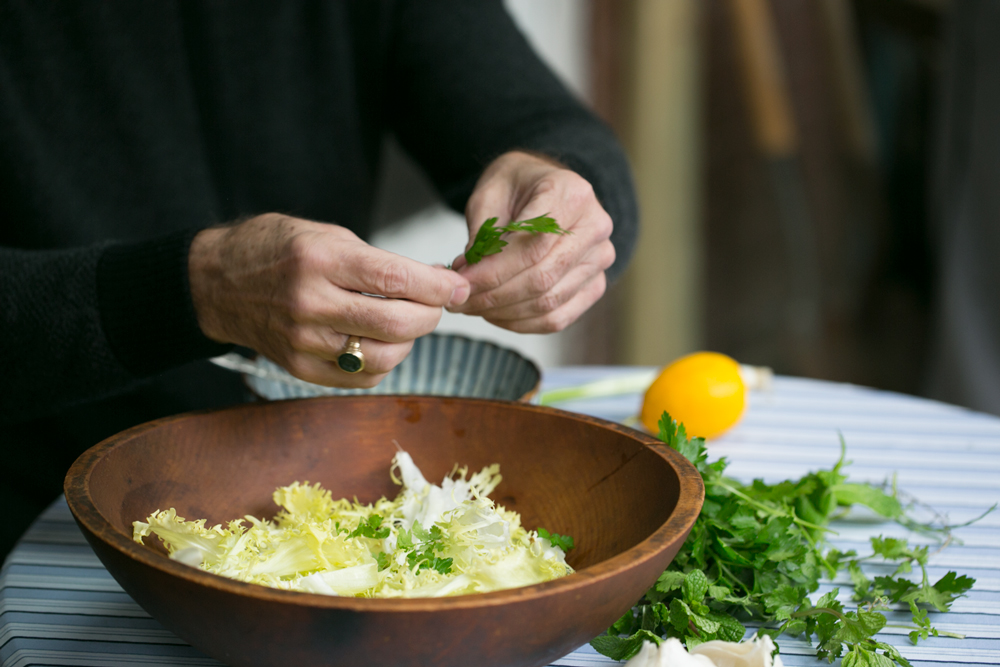
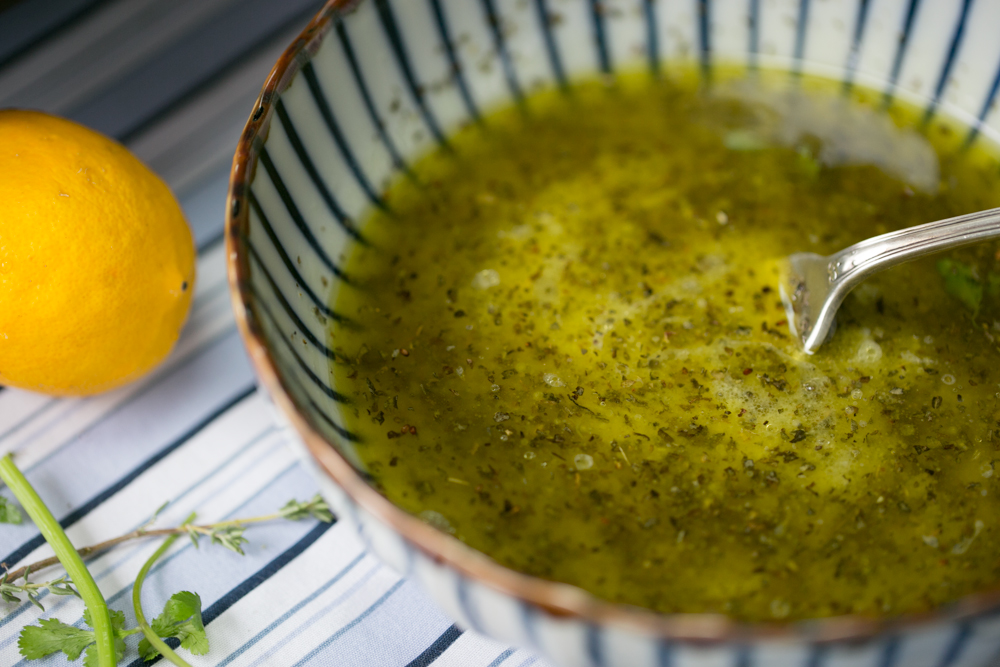

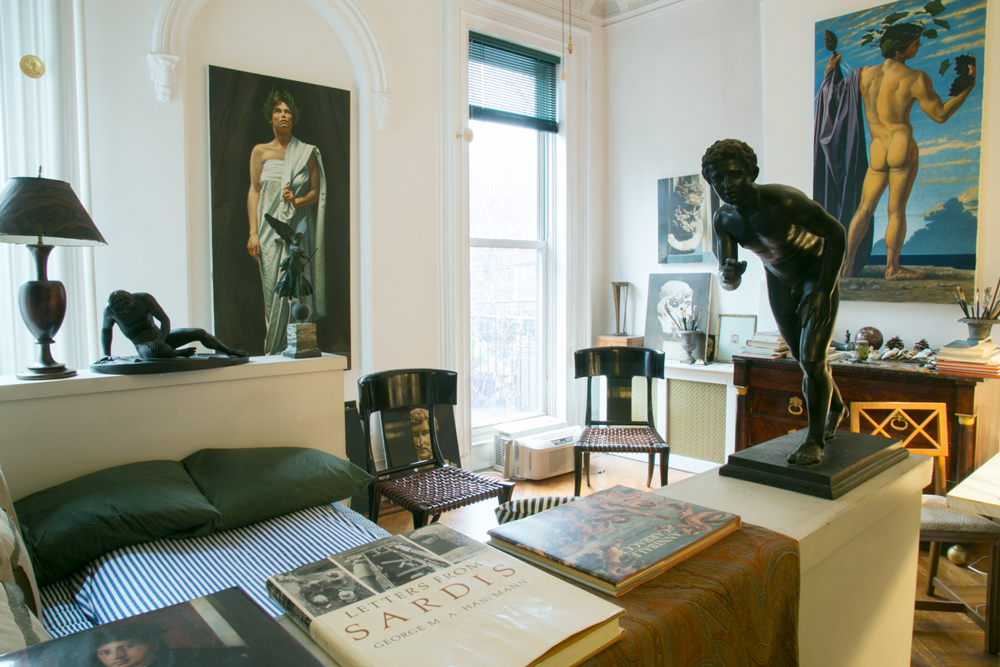

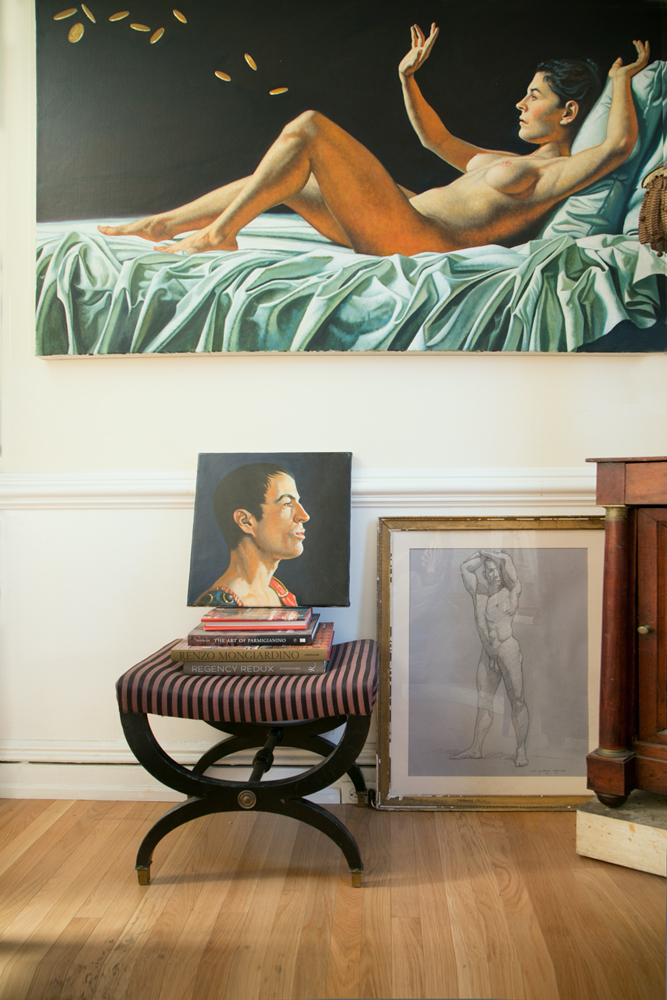
POSTED UNDER
- side salad
NOTES
Taken from the original ancient Roman salad, salata, this dish is a big ol’ pile of salted herbs. The salt in this case comes from the ricotta salata, a hard and dry cheese that is, well, salty. You can add or subtract herbs as you like. Tarragon, fennel fronds or chervil would be a nice addition.
RECIPE
DIFFICULTY
EASY
SERVES
3
PREP TIME
5 MINS
Salad
-
1headfrisée
-
1/2cupmint leave
-
1/3cupcilantro leaves
-
1/3cupItalian parsley leaves
-
1-2sprigsfresh thyme
-
2green onions, thinly sliced
-
2ozricotta salata
-
salt and pepper to taste
Dressing
-
1tbsfresh lemon juice
-
1small clovegarlic, minced
-
1tspdried basil
-
1tspDijon mustard
-
3tbsolive oil
POSTED UNDER
- side salad
John Woodrow Kelley lives right next store to me in Clinton Hill, Brooklyn, but the interior of his home/studio would make you think you were in a Roman boudoir. Inspired by Ancient Greek and Roman history, John’s Neo Classical paintings are stacked to the ceiling, trompe l’oeoil landscapes adorn folding screens, tables are made from shiny marble and well worn-in books on the topic are neatly stacked on every surface. John, a trained architect, is entirely committed to the buildings, motifs and the portraiture of this period, and has been since he was a boy.
I wanted to make a salad with John to celebrate the publication of his artist monograph, Greek Mythology Now, which chronicles his long time obsession with the topic through his inspired canvases. It seemed only natural that we take this opportunity to research the role of the salad in ancient Rome (why deviate from the genre now?), and draw on our findings for the blog.
As it turns out, the very word salad, comes from the Roman word for a dish of salted herbs or vegetables, salata. We found this useful quote:
Etymologically, the key ingredient of salad, and the reason for its getting its name, is the dressing. The Romans were enthusiastic eaters of salads, many of their differing hardly at all from present-day ones– a simple selection of raw vegetables…–and they always used a dressing of some sort: oil, vinegar, and often brine. And hence the name salad, which comes from Vulgar Latin Herba salata, literally ‘salted herb’.
– An A-Z of Food and Drink, John Ayto [Oxford University Press:Oxford] 2002 (p. 294)
John Woodrow Kelley in His Own Words
Julia: What sparked your interest in Classicism?
John Woodrow Kelley: My interest in Classicism dates to the time at about age eight when my parents took me to see the Parthenon Museum in Nashville, Tennessee, which is a full scale replica of the one in Athens, Greece. I’ve been studying and re-interpreting it ever since.
JS: I know you studied and practiced architecture, but how did you become a painter?
JWK: I first studied painting with a private teacher in Knoxville around age 12. I took studio classes while I was in architecture school at Pratt, but I only found the right teacher when I quit my job as an architect with the Manhattan firm Davis and Brody, and I took classes at the Art Students League with Ted Seth Jacobs. At that point, I had started making a living as a portrait painter, which gave me the courage to become a full time artist.
JS: What inspires you to keep working in the Classical vein?
JWK: In my paintings I cast contemporary looking people in classical roles. I want to demonstrate that the Greek myths, which have embodied the human condition for thousands of years, are a valid subject for a new interpretation.
JS: Congratulations on your book, it is beautiful. How did the book evolve?
JWK: I told the director of the Parthenon Museum the story of my childhood inspiration there, and she offered me a solo show in 2004. We produced a great catalogue for the show, and when my photographer/book producer, Jim Wells, saw it a few years later, he proposed we make it into a book. Everything really goes right back to the Parthenon!
JS: What are you planning to do next?
JWK: The Knox Heritage organization in TN asked me to teach a drawing intensive course in Rome for a group of architectural preservationists in 2015. Rome is endlessly fascinating and inspiring for me, an interface between the ancient world and the modern, between east and west! And for the rest of my future, I plan to just keep painting. Artists never formally retire; Titian was painting in his nineties when the plague carried him off. He was happy till then, I’m certain!
